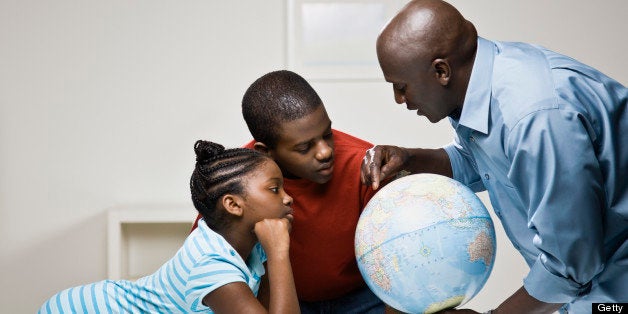
June 19th may not be as widely celebrated today as it was for more than a century, but it remains one of the most important dates in this nation's climb from slavery to freedom.
In the late spring of 1865 -- two years after Abraham Lincoln signed the Emancipation Proclamation into law, two months after the Civil War's official end and within days of the president's assassination -- most slaves were still not free.
In Texas, the Confederacy's southernmost hold, the task of informing the slaves went to Major General Gordon Granger. Riding into Galveston on June 19 armed with General Order No. 3, he made the announcement: from that day forward, all slaves would, at last and forever, be free.
June 19, or "Juneteenth," as it is now called, commemorates African-American's "independence day." That this hard-won freedom has yet to be fully realized is no secret. That our images of slavery remain distorted is a surprise.
In this 150th anniversary year of the Emancipation Proclamation, two recent films pivot on the era: Lincoln and Django Unchained. In Lincoln, slaves are unbelievably absent; in Django, they're unbelievable.
On television, PBS aired a three-part documentary, The Abolitionists. In it, the role of slaves and free Blacks in abolition was -- with the exception of Frederick Douglass (one of the most famous men of his day) -- non-existent.
On the side of progress, a new biography, Thomas Jefferson: The Art of Power, by Jon Meacham, is the first to unequivocally relate the relationship between Jefferson and Sally Hemings. The enslaved 14-year-old half-sister of his deceased wife, he took her to Paris and kept her at Monticello, where he fathered their six children.
In 2010, nearly two centuries after his death, for his transgressions, the Texas Board of Education removed the third president of the United States from the state curriculum. With Texas as one of the country's largest textbook-buying blocks, that statewide decision cast a chill on the publishing industry and endangered historical accuracy nationwide.
Slavery. It's complicated.
As Mark Twain wrote in Life on the Mississippi (censored and expurgated for decades by his publisher for observations as pungent as this): "I missed one thing in the South -- African slavery. That horror is gone, and permanently. Therefore, half the South is at last emancipated; half the South is free. But the White half is apparently as far from emancipation as ever."
He was half-right. 150 years after Emancipation -- because the refusal to confront slavery's wrongs plunged the South into Jim Crow segregation -- slavery's grip remains powerful and painful. Black and White, it haunts us all, keeping us bound to the past. Straining every institution and discourse, its wounds cut deep.
So, how do we heal and move on? What can we tell our children about slavery to prevent the continued spread of its toxicity for generations to come?
1. Tell them the truth (in age-appropriate doses).
Slavery is a system of institutionalized terror that denies freedom to some for the benefit of others. Slavery in America lasted 246 years (1619-1865) and destroyed an estimated one hundred million lives.
2. Rethink the phrases we take for granted.
No one is "born a slave." Nature does not make people slaves; people enslave other people. Slaves were people tortured for profit; priced and bartered like furniture.
3. Be clear about your values.
We condemn and punish those who steal a watch or a car. Are human beings not worth the consideration due a watch? Don't absolve George Washington as a slave owner because he freed some of his slaves in his will. If you were his slave, would that satisfy you?
4. Model healing, not abuse.
Every child knows what is fair and what is not. Demonstrations that divide children into groups of slaves and masters reinforce privilege and powerlessness. Educate them to justice, not to slaveholding.
5. Avoid easy explanations and stereotypes.
Not every Northerner was an abolitionist nor every Southerner pro-slavery. The North ended slavery decades before the Civil War, but profited from it to the end. The whips, lashes and chains used to enforce slavery in the South were manufactured in the North.
6. Celebrate the good.
The more I learn of slaves, the more I know of heroes. Among them, Arnold Cragston, a slave by day who rowed others to freedom by night. In her Midnight School, Milla Granson taught fellow slaves to read and to write the passes that would set their minds and bodies free.
Today, on Juneteenth, we are reminded that only by confronting what is wrong can we make things right. To see ourselves as part of the struggle is to empower ourselves as part of the solution.
© Janus Adams 2013
Janus Adams, author of Freedom Days: 365 Inspired Moments in Civil Rights History, is founder and publisher of BackPax children's media. The newest title is STEAL AWAY: Escape to Freedom on the Underground Railroad -- a book, audio, and board game set. Her website is: www.JanusAdams.com